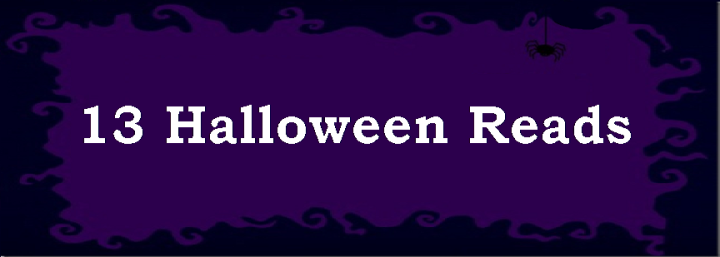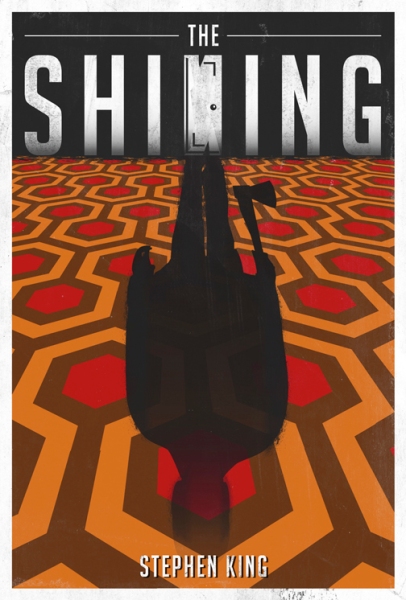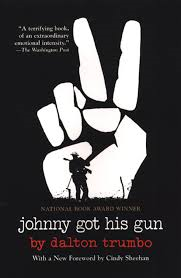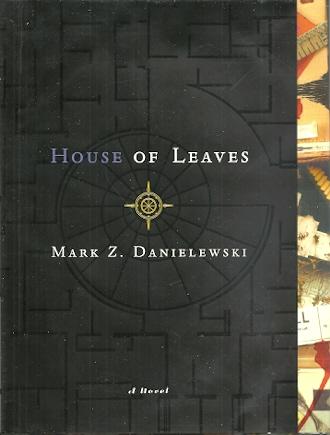 With less than a week to go before spooky celebrations get underway, I’ve got Halloween on the brain. I love the idea of Halloween, because I love scary stories… and let’s face it, All Hallows Eve is the perfect backdrop for them. Think about it: the wind’s howling like it’s being beaten, there are autumn leaves strewn everywhere, the streets are lost to the shadows, and there’s that ever-present chance that just around the corner, something awful is going reach out and touch you…
With less than a week to go before spooky celebrations get underway, I’ve got Halloween on the brain. I love the idea of Halloween, because I love scary stories… and let’s face it, All Hallows Eve is the perfect backdrop for them. Think about it: the wind’s howling like it’s being beaten, there are autumn leaves strewn everywhere, the streets are lost to the shadows, and there’s that ever-present chance that just around the corner, something awful is going reach out and touch you…
Yes, okay, that ‘something awful’ is most likely to be a small child in an elaborate costume who would very much like some sweets, but that’s not the point. Halloween, for me, is all about embracing the deliciousness of fear – it’s a night when anything can happen, and you think twice about ignoring that strange bump in the night.
In honour of the occasion, I’ve put together a list of thirteen scary stories that are well worth a read this Halloween. If, like me, you love a fright, why not give one of these a try and spook yourself silly?
#7 The Shining by Stephen King
No list of horror stories is complete without at least one offering from the reigning king of horror, Stephen King, and this is one of my absolute favourites. Forget the Kubrick film adaptation: this is the real thing. There’s no “here’s Johnny!”, or “all work and no play…”. There’s no silly garden maze, or silly childish voices groaning “REDRUUUUUUUM!”. Don’t get me wrong, I love Kubrick; but the frights he offers are nothing compared to the chills Stephen King can give you.
The Shining follows the story of Jack Torrance, an aspiring writer and recovering alcoholic who accepts a position as an off-season caretaker in the Overlook Hotel. As the job means remaining in the hotel all winter, Jack’s wife and young son family accompany him on this job. Danny, Jack’s son, possesses “the shining”: an array of psychic abilities that allow him to see the horrific things that have happened in the hotel. Then, after a winter storm leaves them snowbound, the supernatural forces inhabiting the hotel gain enough power to be able to influence Jack’s sanity, leaving his wife and son in incredible danger. This is a story of a battle with the supernatural.
In this novel, King demonstrates his uncanny ability to vocalise the most primitive of our fears, and give a face to the darkest aspects of the subconscious. He shows how easily the mind can play tricks on us, how we cannot trust even those closest to us when darkness falls, and how vulnerable we all are to sinister forces that lurk in bad places… and make no mistake, the Overlook is a bad place.
Perhaps most importantly, though, The Shining shows us why we should never, ever trust topiary animals.
Seriously.
Don’t believe me? Read the book.
#8 Johnny Got His Gun by Dalton Trumbo
I warn you, this one is not for the squeamish. Trumbo’s acclaimed anti-war novel explores the horrific fate of Joe Bonham, a young soldier who, after serving in World War I, awakens in a hospital to learn he was caught in the blast of an exploding artillery shell and has subsequently lost his arms, legs, and all of his face (including his eyes, ears, teeth, and tongue). However, his mind functions perfectly, effectively rendering him a prisoner in his own body.
This is, effectively, my worst nightmare. The human body becomes a cage for someone’s consciousness, and there is no way out. Trumbo does not flinch or shy from the subject, though. In excruciating detail, the novel explains Joe’s failures to commit suicide and to raise awareness of the horrors of war.
That is, perhaps, the reason why this novel was so highly acclaimed – it is at once horrific and eye-opening. It remains highly read despite being published as early as 1939 and, once read, is impossible to forget. The book became a rally point for the political left that had opposed involvement in World War II during the period of the Hitler-Stalin pact, and serves to this day a powerful reminder of the human casualties of war. If you’ve got the stomach for it, it is well worth a read.
#9 House of Leaves by Mark Danielewski
Step up, step up, all those who like a challenge: of all the novels highlighted in this series of recommendations, easily the most sophisticated offering is Danielewski’s debut novel, House of Leaves. In terms of format and structure, the book is intriguingly unconventional, containing copious footnotes (many of which contain footnotes themselves!) including references to fictional books, films and/or articles. Some pages contain only a few words or lines of text, arranged in strange ways to mirror the events in the story, often creating both an agoraphobic and a claustrophobic effect. The novel is also distinctive for its multiple narrators, who interact with each other throughout the story in elaborate and disorienting ways. It is, truly, a work of art as much as it is a work of fiction.
The book begins with a first-person narrative by Johnny Truant, a Los Angeles tattoo parlor employee, desperate flat-hunter, and professed unreliable narrator. Truant discovers a manuscript written by the deceased Zampanò, the former elderly tenant of a flat in his friend Lude’s building, which turns out to be an academic study of a documentary film called ‘The Navidson Record’. The rest of the novel incorporates several narratives, including Zampanò’s report on the fictional film; Truant’s autobiographical interjections; a small transcript of part of the film from Navidson’s brother, Tom; a small transcript of interviews of many people regarding ‘The Navidson Record’ by Navidson’s partner, Karen; and occasional brief notes by unidentified editors, all woven together by a mass of footnotes. There is also another narrator, Truant’s mother, whose voice is presented through a self-contained set of letters titled ‘The Whalestoe Letters’. All this interweaves to create one unforgettable story.
Here’s the thing about House of Leaves: you could simply enjoy it as a horrifying story that could possibly be true, or as a love story on a number of different levels, or as a whole bunch of puzzles and codes and ciphers, or as a satirical critique of academic criticism, or as a unique reading experience that will make you fall back in love with actual paper books… all of these readings stand alone in their validity. The possibilties really are endless here, because the interpretation required is so subjective – the text manages to be whatever you want it to be.
However you choose to enjoy it, though, you’ve got to commit to it if you really want to unlock its magic. You have to let the book take ahold of you; believe in the world it creates… and when you’re done, you have to know that Danielewski’s novel will probably embed itself deep inside your mind, n some dark, neglected corner, and will stay with you. You’ll find yourself closing the cover, wondering if the nightmares will actually come (assuming they haven’t already, that is)… and if that’s not the recipe for a cracking Halloween novel, I really don’t know what is!
(Images: Amazon)



